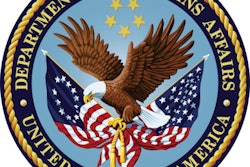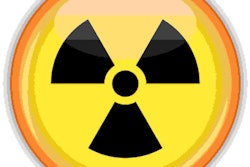The Joint Commission has released updated accreditation requirements for diagnostic imaging service providers in U.S. hospitals and ambulatory care centers. Although the new rules emphasize imaging safety in positive ways, more specific guidance is needed, according to safety advocates.
"These requirements put recording radiation dose, tracking dose ranges, requiring that dose ranges conform with benchmarks, and insisting that a clinical indication has to be matched to the correct protocol on the table," said Dr. Rebecca Smith-Bindman of the University of California, San Francisco. "And that's fantastic. But these ideas need to be supported by specific details and metrics against which facilities can track their progress. In the absence of specifics, we're left with each institution defining best practice, and that's unlikely to lead to consistency or high quality."
Subtle but significant changes
An initial version of the requirements was issued in January last year and was to be applied in July 2014. But in May, the Joint Commission said it would delay this implementation by a year -- in response to feedback that further clarification of particular issues was needed, including minimum qualifications for CT technologists, expectations for medical physicists' involvement in annual imaging-equipment performance evaluations, and documentation of CT exam radiation dose. On January 9, the organization released updated requirements that will go into effect on July 1.
These requirements include revisions for those concerns, although rules setting minimum qualifications for technologists performing diagnostic CT exams remain on hold pending additional research, according to Joyce Webb, project director of the Joint Commission's Division of Healthcare Quality Evaluation.
"This set of requirements does not include minimum qualifications for CT techs," she told AuntMinnie.com. "We're still working on that. But we did clarify expectations for medical physicists regarding performance evaluation of CT, MR, nuclear medicine, and PET equipment."
Items removed from the current document (as compared to the last published version, December 2013) include the following:
- Standard HR.01.02.05 C 19: Technologists who perform CT must be registered and certified by the American Registry of Radiologic Technologists or certified by the Nuclear Medicine Technology Certification Board.
- Standard HR.01.02.05 C 20: Formal graduate-level coursework in biological sciences is required for medical physicists.
- Standard PC.01.02.05 C 6: Ionizing radiation dose exposure must be recorded in a CT patient's interpretive report and/or included in a protocol page.
The new document will improve clinical practice, according to Frank Shellock, PhD, of Keck School of Medicine at the University of Southern California. Shellock served on the Joint Commission's diagnostic ionizing radiation and magnetic resonance expert panel between 2012 and 2014.
"The ultimate intent of these new requirements is to impact MRI safety for patients and healthcare workers," he said.
'A' for effort?
The Joint Commission should be lauded for this attempt to start focusing on advanced imaging safety, but much more specific detail is needed, according to Dr. Emanuel Kanal, director of magnetic resonance services at the University of Pittsburgh.
"In and of themselves, these requirements will not tell you how to run an MR center safely," he told AuntMinnie.com. "But it does signal that the Joint Commission is looking at the issue."
For example, standard EC.02.02.01 states that "the [critical access] hospital manages safety and security risks" for MRI associated with "patients who may experience claustrophobia, anxiety, or emotional distress, patients who may require urgent or emergent medical care, patients with medical implants, devices, or imbedded metallic foreign objects, ferromagnetic objects entering the MR environment, and acoustic noise." But there are a few key safety concerns not on the list, according to Kanal.
"Although it certainly is a real concern for patients, I wouldn't list claustrophobia as a significant safety risk per se -- certainly not when compared to the risks of bodily injury from, for example, burns from MRI-transmitted [radiofrequency] power interacting with electrically conductive materials in the bore of the scanner," he said. "But MR burns, which are the No. 1 reported injury associated with MR, are not highlighted on this list. And neither are contrast agents, even though roughly 40% of patients who undergo MR exams may have an MR contrast agent administered to them."
In 2008, the Joint Commission issued Sentinel Event Alert (SEA) 38, which addressed preventing accidents and injuries in the MR suite, listing specific types of protections. However, this specificity does not appear in these current requirements, according to Tobias Gilk, senior vice president of Radiology-Planning and founder of Gilk Radiology Consulting.
"If you look at the 2008 SEA on MRI safety, the Joint Commission had a list of 10 explicit protections -- plus three additional in the narrative text -- but almost none of them are in these new diagnostic imaging standards," he told AuntMinnie.com. "I find that curious."
Sentinel Event Alerts serve a different purpose than requirements, according to Webb.
"The goal of these requirements is to focus on imaging safety, and there's nothing here that conflicts with that Sentinel Event Alert," Webb said. "Our alerts provide guidelines and recommendations, but these are accreditation requirements."
Documenting CT dose
One significant change in these current requirements has to do with where CT exam dose is documented, Smith-Bindman said.
"In the initial requirements, CT exam dose was to be recorded in the patient's record and radiology report," she said. "These say that the dose needs to be documented and retrievable but doesn't specify where. There's nothing particularly magical about having this information in the medical record -- but it does allow for that data to be in a place where people see it. If the data are only available within the CT image, most radiologists, and no referring clinicians, will be able to see these data, and it will be difficult if not impossible to easily analyze these data to create standards."
Standard PC.01.03.01 A 25 states that CT imaging protocols must be based on current standards of practice that address criteria such as clinical indication of the exam, contrast administration, age of the patient, patient size, and expected radiation dose index range. But without specifics, its impact is significantly lessened, according to Smith-Bindman.
"Telling people to stick to benchmarks without making those benchmarks clear doesn't work," she said.
Baby steps
Even though the new requirements leave much to be desired, they do signal that the Joint Commission has imaging safety in its sights, Gilk said.
"Every hospital in the U.S. that offers imaging services should be aware of these requirements, whether they have Joint Commission accreditation or not," he said. "And while these standards are for diagnostic imaging, if I were running a hospital or a radiology department, I would be taking a hard look at anything interventional or intraoperative and making sure these activities also were minimally compliant with what the Joint Commission is requiring for diagnostic imaging."
This document represents a small and important step toward imaging safety. But what is needed is faster progress, Smith-Bindman said.
"There's a real urgency that we start taking some giant steps within the medical imaging community to ensure that we're providing high-quality care that helps patients," she said.




















